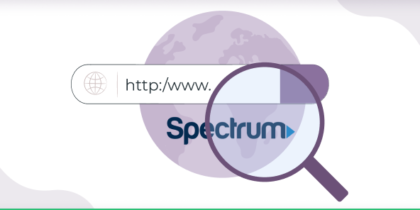An explosion of devices and data within the internet of healthcare makes way for greater value and service. All thanks to an exchange of connected data amongst a plethora of objects embedded within electronics software sensors and connectivity, the healthcare industry heavily relies on internet-connected devices.
However, the transformative potential of the internet of things (IoT) won’t be realized within the healthcare industry unless data integrity and security are designed and built into the very foundations of the IoT movement.
For example, a patient wearing a sensor that monitors her vital signs is attached to a drip that can be remotely controlled by her medical team. The device can transmit data to several points, including their off-site physician, medical care team, emergency services, and the device technicians.
While that is truly transformative, it does ring bells regarding the secure transmission of data.
IoT in Healthcare
The transmission of data via these multiple points is genuinely remarkable progress, but also one that invites cyberattackers to exploit potential loopholes. There are nearly 30 billion IoT devices that transform almost every industry, and even our cities work.
With billions of interconnected devices in the healthcare industry, IoT devices are reshaping the way healthcare workers respond to emergencies and work with more accuracy.
While healthcare and medical device manufacturers are in a race to see who can create the smartest and most-connected IoT devices first, the real concern should be who is creating the most secure devices.
Risks of IoT Devices in Healthcare
Advancements in technology and risks go hand in hand. As more and more devices become an integral part of our daily lives, their vulnerabilities can have a lasting impact on our daily activities. For example, a TV connected to the internet can get hacked, and the hacker can configure it to operate as they want.
Coming back to internet-connected devices in the healthcare industry, issues such as efficient battery life, and making sure there is enough power to run these devices are less stressing concerns.
The real concern is whether these devices are designed keeping security in mind. Since healthcare devices need to have a zero percent chance of getting intercepted (for obvious reasons), healthcare manufacturers must develop hardware and software that combats online threats without risking the patient’s life.
In the last decade, 2,550 data breaches have compromised over 189 million healthcare records. A study reveals that 89% of healthcare providers have undergone a data breach. It costs healthcare institutions $429 for each stolen record. If you think that is worse, it’s expected that by 2021, cyber-related crimes will result in losses worth $6 trillion.
Then there is the threat of all this sensitive patient data being stolen and used for nefarious purposes or sold on the black market. It doesn’t come as a shock that hacked medical records are already being used to create phony prescriptions or billing fraud.
What’s worse is the potential scale hacks that can occur as billions of IoT medical devices will potentially create as many new paths of access to this information.
How to Secure IoT Devices in Healthcare
When it comes to IoT devices in healthcare or any other industry, there is a lot of potential misuse and abuse that actively takes place. Securing the very devices that are designed to secure us would take a concerted effort in keeping everything attached to it safe.
Fortunately, security advocates, along with both federal and private institutions, realize the need to secure IoT in healthcare infrastructure. Hence, all concerned parties are actively collaborating to create safety standards and detect and patch any loopholes.
However, when it comes down to online security, it really settles down to an individual’s online habits and common sense. For instance, healthcare practitioners should not be allowed to use their personal IoT devices within the healthcare facility. That means they shouldn’t be allowed to connect to the hospital’s secure network.
What’s important is to have a secure encrypted network within the healthcare facility. That means all data going in and out of the cloud should be encrypted, and all devices connected to the network must have strong passwords.
Having an encrypted connection is the first part of the defense. There are good old spam email and phishing attacks, which will likely increase as healthcare and other industries growingly adopt the IoT movement.
If a healthcare facility is targeted by a social engineering attack, the healthcare practitioner might mistakenly click a link/attachment or enter their credentials into a phony website. By doing so, the hacker would gain access to the network and possibly infect all IoT medical devices connected to the network.
This means you need to be aware of the evolving cyber threats around you to combat them effectively. And what better way to educate yourself when events such as National Cybersecurity Awareness Month (NCSAM) specifically focus on ‘Securing Internet-Connected Devices in Healthcare’ during their third week of the monthly campaign.



